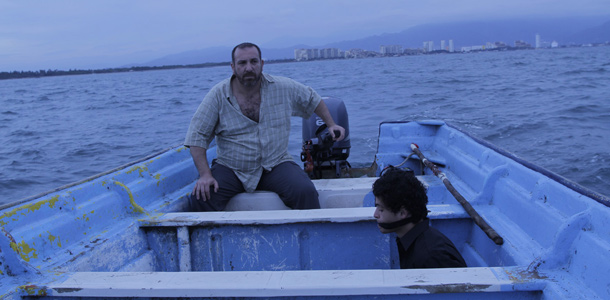After Lucia: Despues De Lucia (Michael Franco, 2012): France
Reviewed by Rachel Morales. Viewed at AFI Fest 2012

Is it possible to intensely dislike a film yet still believe it is worth seeing? As I recently discovered at the AFI Fest in Los Angeles, the answer is yes. The subject of this apparent paradox is Despues de Lucia (Michael Franco, 2012), a reality-based film about a group of high school students who allow the power of groupthink to blot out all traces of their humanity. The results are horrifying, tragic, difficult to watch… yet impossible to not watch, and certainly important to acknowledge.
The setting of Lucia is a high school in Mexico City; the main characters are a group of affluent teenagers whose biggest problem in life is a busted cell phone. Into this mix enters Alejandra, “Ale,” a sweetheart of a girl who recently moved to town with her father. In fact Ale and her father are runaways of a sort, having fled their home in Puerto Vallarta following the tragic loss of Ale’s mother in a car crash. At first the kids welcome Ale; like us, they find her to be charming and affable. However, while we in the audience know about the death of Ale’s mother, the kids at the new school never find out about it since Ale carefully avoids any mention of her mother. She bears her suffering in silence.
Unfortunately, Ale’s father does not possess his daughter’s stoicism. At work he is emotional and easily falls apart; when his coworkers’ discuss an upcoming wedding, he leaves the room in tears. Ale, sensing her father’s deep grief, assumes the role of matriarch. She cooks and cleans and even dons her mother’s dress at one point. She is a pillar of dignity and strength.
In a scene that could take place at any middle-class high school in America, Ale gets caught up in teenage drama that snowballs into teenage trauma. While partying one night in the home of one of her new friends, Ale, aware that the camera is rolling, has sex with one of the guys. Social media in Mexico is apparently the same as social media in the USA, because by the next morning the video is posted for everyone to see. And so it begins; first the text messages calling Ale a whore, then the incidents of intense bullying, including rape. In one scene we see Alejandra clad in a bright red shirt. She might as well have been branded with a bright red “A.” The kids seem to revel in thinking up new forms of humiliation for Ale. Proving that females can pile on as viciously as the males, one former girlfriend holds Ale down while another cuts off all of her beautiful brown hair. Still Ale doesn’t crack. She doesn’t tell a soul.
The torture progresses but the camera never moves. Like us, it sits there impotently. Like us, it is being forced to watch. The director places the camera unobtrusively away from the characters, basically reducing us to voyeur status. When a character happens to move out of the frame, we hear the action but we are unable to see it. Our frustration grows by the minute. Because there are no close-ups, zooms, pans, etc., we miss out on the usual visual cues, such as the emotion on the characters’ faces. In fact, some of the characters have their backs to us; when they speak, we are staring at the backs of their heads. The camera never moves. It is cold and harsh; and yet, this immobile, unfeeling instrument somehow records a lot of natural beauty. The outdoor ocean scenes are especially stunning, even from our lowly vantage point. This actually creates more dissonance. After all, how can we enjoy any view that serves as a backdrop to the torture of a young girl? The implacable beauty surrounding us adds a layer of pain.
Is Despues de Lucia a film worth seeing? It definitely examines a pervasive social problem. In truth, only home-schooled students are immune from bullies: A kid might be the bully, or s/he is the victim of the bully, or s/he is the witness of bullying behavior, in which case the kid is either a passive observer or an active protester. For those of us who would never tolerate bullying, watching the torture of a sweet high school kid is unbearable and sickening. Perhaps Michael Franco would welcome this sort of reaction. It might even be true that the more controversial a film is, the more awareness it raises. However, a limit, some line of decency, must be drawn. The “X” rating, which was designed to warn the public about the graphic nature of the images in a film, should also be applied to the pornographic degree of suffering contained in a film like Despues de Lucia. Is the film instructive? Most definitely. Is bullying an important topic? Of course. But so is earthquake prevention, and I don’t need to be buried under a pile of rubble to understand that fact, nor do I need a filmmaker to hold my hands in a fire to convince me that arson is a serious crime. Forcing me to stand by helplessly and watch a beautiful young girl get tortured is not going to solve the problem of bullying in high school.
About this entry
You’re currently reading “After Lucia: Despues De Lucia (Michael Franco, 2012): France,” an entry on Student Film Reviews
- Published:
- 11.08.12 / 9pm
- Category:
- AFI Filmfest 2012, Films
4 Comments
Jump to comment form | comments rss [?] | trackback uri [?]